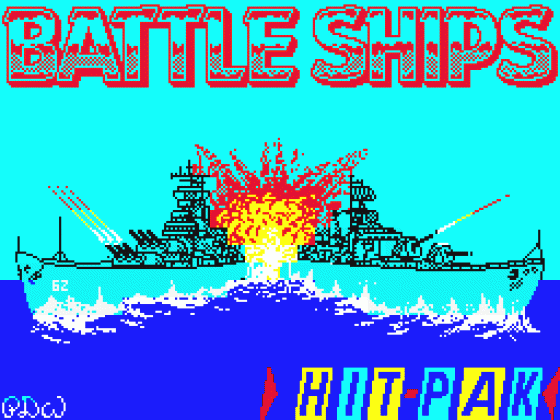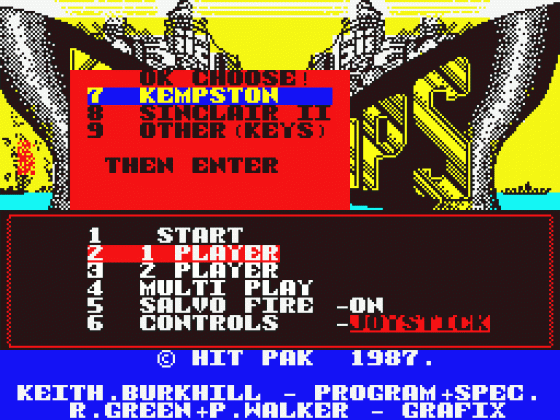
C&VG
 1st September 1987
1st September 1987
Categories: Review: Software
Publisher: Encore
Machine: Commodore 64/128
Published in Computer & Video Games #71
Battleships
Bing, bing, biiing! The sonar is ticking away nicely but I still haven't managed to pick up that sneaky sub, and it's bound to be lying in wait, ready to pick off my flagship aircraft carrier. Where is the little **@!?
The tension mounts as another classic sea battle reaches its climax. Which fleet will emerge victorious? Who will survive to sail back to home base?
Who'd have thought it could be done? That old schoolboy classic Battleships on computer. If anyone had told me that it was being done I would have had to smother a snigger or two.

But the trouble truth is that Battleships - a 50 year old game - is simply horribly addictive.
Play the computer, play a friend, play loads of friends in this updated strategy style offering based on the game you used to play with a couple of scraps of paper and pencils.
Load up the game and you are presented with an options menu. This allows you to select controls and decide if you want to play against the computer, a friend or indulge in a bit of multi-player action.
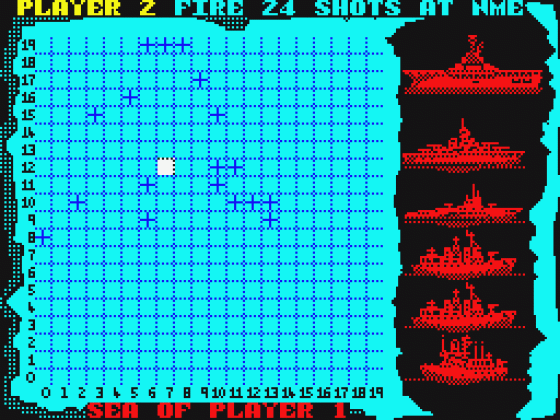
Two players compete at any one time then take on all-comers in a knock-out tournament. This is the only way you can get your name on the hi-score chart.
Playing the game goes like this. First you position your ships on the battle-sea. The sea is represented as a grid system and your ships as different shaped groups of squares.
The computer/player two goes through the same procedure - then it's on to the good bit - the blasting.
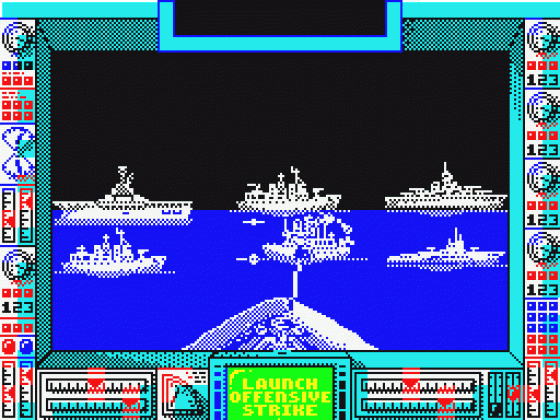
You begin with 24 shots which you position in the squares of the grid using a cursor.
Starting out you simply have to guess where to position your firepower - it's a good idea to simply spread your shots evenly over the grid.
Once you've used up your ammo the screen display switches to the attack screen which shows an animated view of your sheels hitting or missing the enemy ships.
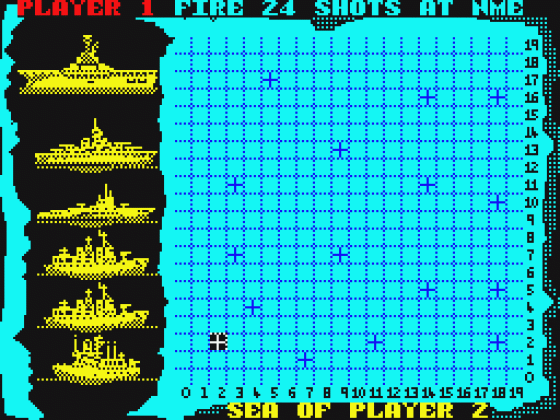
The ships you're attacking are displayed in detail down the side of the screen in the C64 version, while the Spectrum and Amstrad games show you the fleet bobbing about on a pixellated sea.
If you hit a ship, a square on the grid is filled in red, a miss is indicated by a blue square. If you've remembered the shapes of the different ships you'll be able to direct your fire more accurately. But remember they can be rotated diagonally on the grid.
Your attack over and it's the turn of your opposite number to attack you in exactly the same fashion. If one of your ships is sunk, you lose firepower. And it's quite distressing to see them slip beneath the waves.
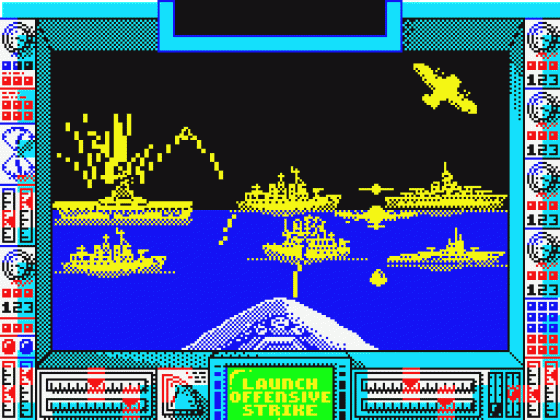
Don't despair if your big ships take a beating. It has been known for a tiny missile ship - just two squares in size! - to stick around long enough to beat the enemy fleet.
Spectrum and Amstrad versions are graphically similar - with the same attack/battle screen showing boats on the sea. The C64 version is different. It shows a bow mounted ships gun blasting away at the horizon while planes fly overhead dropping bombs.
As boats are hit, they settle in the sea - several hits are needed to finish them off finally and it has been known for a totally crippled ship to sail past in the victory parade!
Gameplay is much the same on all versions - after all, you can't really change much in such a simple concept. In fact, it's so simple it's brilliant.
Other Reviews Of Battle Ships For The Commodore 64/128
Battle Ships (Encore)
A review
Battleships (Elite)
A review by Mike Pattenden (Commodore User)
Cheapo Round-Up
A review
Scores
Amstrad CPC464 Version| Graphics | 90% |
| Sound | 80% |
| Value For Money | 90% |
| Playability | 99% |
| Overall | 90% |
Scores
Commodore 64/128 Version| Graphics | 90% |
| Sound | 90% |
| Value For Money | 90% |
| Playability | 99% |
| Overall | 93% |
Scores
Spectrum 48K/128K/+2 Version| Graphics | 90% |
| Sound | 70% |
| Value For Money | 90% |
| Playability | 99% |
| Overall | 88% |


